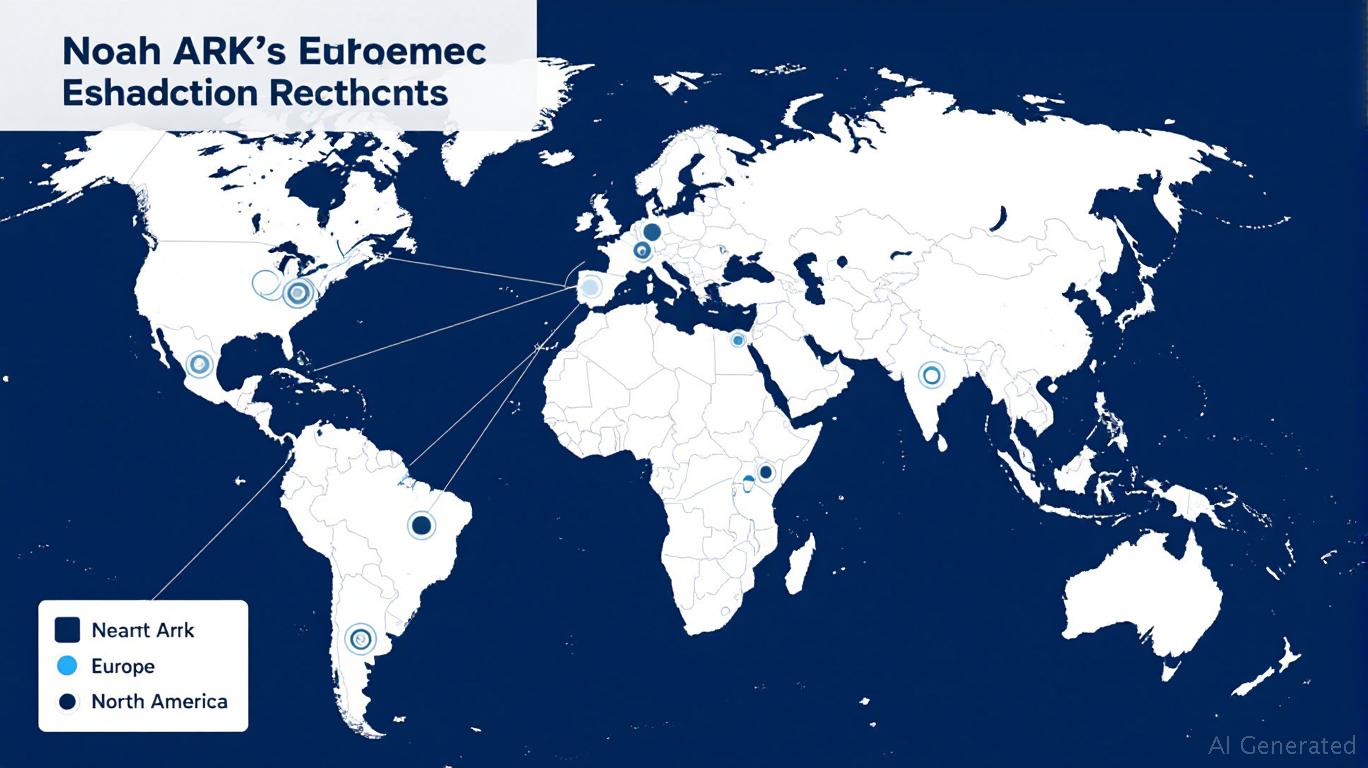Noah ARK: Navigating Global Volatility with AI and Diversification in Alternative Investments
Amidst a global landscape of economic uncertainty, geopolitical tensions, and market volatility, high-net-worth individuals (HNWIs) are increasingly seeking refuge in alternative investments. Enter Noah ARK, a wealth management powerhouse with a 20-year track record, leveraging AI-driven insights and geographic diversification to capitalize on scarce, high-growth opportunities. This article explores why Noah ARK is uniquely positioned to thrive in the next cycle—and why investors should consider allocating now.

The Foundation: A 20-Year Proven Strategy
Noah Group, founded in 2005, has evolved into a global leader in wealth management, specializing in alternatives for Mandarin-speaking HNWIs and family offices. Its 20-year track record is built on a disciplined approach to risk mitigation and growth, underpinned by the Strategic Asset Allocation Pyramid Model. This framework divides portfolios into three tiers:
- Wealth Preservation (20–30%): Fixed-income securities, trusts, and physical gold (5% of AUM).
- Resilient Income (40–50%): Real assets like infrastructure, real estate, and commodities. For instance, Noah's exposure to CapitaLand's data centers in India and Japan's logistics sector delivers stable returns.
- Growth Catalysts (20–30%): High-potential sectors such as AI, , and advanced manufacturing. Two-thirds of Noah's AUM is allocated to alternatives, with a focus on scarce, high-growth assets.
AI as a Competitive Advantage
Noah's edge lies in its AI-driven tools, which streamline client engagement and unlock insights into emerging markets. For example:
- Digital Platforms: AI-powered tools automate premium payments and policy applications, reducing friction in markets like Southeast Asia, where 30% of Chinese HNWIs are relocating.
- Data-Driven Research: Initiatives like the GPTalk series and collaborations with institutions like CapitaLand provide clients with access to cutting-edge research, enabling timely decisions in volatile markets.
The firm's allocation to AI-driven sectors (USD $8.7B AUA) aligns with forecasts like Nouriel Roubini's prediction that AI could boost U.S. GDP growth to 4% by 2030, creating a tailwind for this portfolio layer.
Geographic Diversification: A Shield Against Volatility
Noah's 55.1% overseas revenue (as of 2025) reflects its deliberate geographic diversification strategy. Key markets include:
- Hong Kong/Singapore: These hubs remain core, with Hong Kong's Glory Family Heritage platform driving a 28.9% year-on-year rise in insurance revenue to USD $53.7M.
- Southeast Asia: Regulatory easing in countries like Thailand and Indonesia is unlocking cross-border wealth management opportunities, attracting 30% of relocating Chinese HNWIs.
- Europe/Middle East: While cultural and logistical hurdles persist, Noah is scaling its presence through partnerships and “light-license” models in Canada and Australia.
Financial Resilience Amid Headwinds
Despite short-term headwinds—such as a 22.8% dip in Hong Kong's insurance revenue—Noah's balance sheet remains robust. Key metrics include:
- Cash Reserves: RMB 4.1B (USD $598M), supporting a $50M buyback program and a 12% dividend yield.
- Operational Efficiency: Compensation costs dropped by 21.8%, boosting margins in high-growth regions.
- Client Growth: Overseas active clients surged by 23.3% year-on-year, with the advisor team expanding by 44% to serve high-margin markets.
The Investment Case: Why Allocate Now?
Noah's 12-month price target of $26–$28 reflects optimism in its ability to capitalize on three secular trends:
1. Cross-Border Wealth Migration: Southeast Asia's regulatory tailwinds and HNWIs' relocation create a pipeline of demand for Noah's services.
2. AI-Driven Growth: Its early bets on AI infrastructure and partnerships position it to benefit from the sector's exponential expansion.
3. Cyclical Resilience: With two-thirds of AUM in alternatives and a fortress balance sheet, Noah is insulated from traditional market downturns.
Recommendation: For investors seeking to outperform in the next cycle, Noah ARK offers a compelling risk-reward profile. Its combination of geographic diversification, AI-enabled insights, and alternative asset expertise makes it a rare play on both growth and stability. Consider allocating 5–10% of a diversified portfolio to Noah Group (NOAH), particularly as its valuation remains undervalued relative to peers.
Conclusion
In an era of global volatility, Noah ARK's strategic edge—forged over two decades and amplified by AI and geographic diversification—positions it as a leader in the alternative investments space. With a robust financial foundation, a growing client base, and alignment with high-growth sectors, Noah is primed to deliver outsized returns in the years ahead. For investors willing to act now, this could be a pivotal allocation to navigate uncertainty and seize the next cycle's opportunities.
Sign up for free to continue reading
By continuing, I agree to the
Market Data Terms of Service and Privacy Statement

Comments
No comments yet